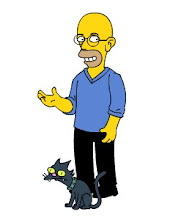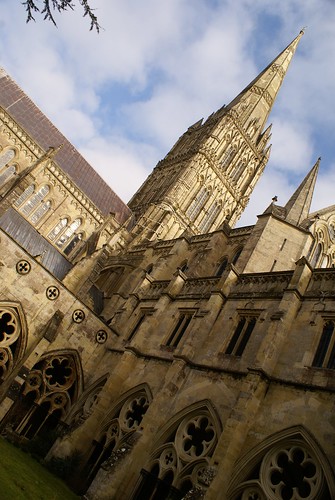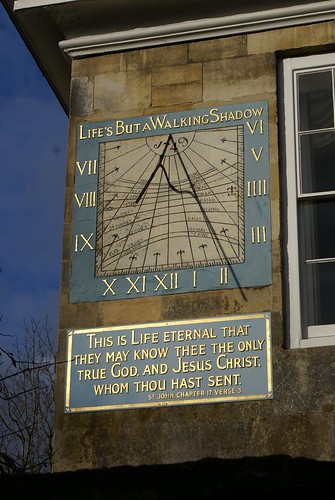Taking the more direct approach to answering the question, that is reading the book, it's immediately clear that we're not in Kansas anymore, and that the author's middle initial has muscled its way into his fiction oeuvre (at least in the UK). What's going on?
 Transition is set firmly, if that is possible, in a Many Worlds universe, largely on versions of the Earth that parallel our own but which are clearly different. For instance, in a provocative inversion of our world, Banks posits one reality (well, technically a branch of them) in which civilisation is threatened by suicide terrorists drawn from the ranks of Christians rather than Muslims. The connection between all of these worlds are "transitionaries", people who can flit their minds from universe to universe, and the novel centres around an organisation, the Concern (or L'Expédience, depending on the universe), that uses such people as agents "for the greater good".
Transition is set firmly, if that is possible, in a Many Worlds universe, largely on versions of the Earth that parallel our own but which are clearly different. For instance, in a provocative inversion of our world, Banks posits one reality (well, technically a branch of them) in which civilisation is threatened by suicide terrorists drawn from the ranks of Christians rather than Muslims. The connection between all of these worlds are "transitionaries", people who can flit their minds from universe to universe, and the novel centres around an organisation, the Concern (or L'Expédience, depending on the universe), that uses such people as agents "for the greater good".Mirroring the split universe theme, the narrative is also divided between six principal characters. The story largely revolves around Temudjin Oh, a skilled Concern agent who uses transitioning in his work as an assassin. His professional abilities, and his budding moral misgivings about his work, respectively bring him to the attentions of Madame d'Ortolan and Mrs. Mulverhill. The former is a senior and controlling member of the Concern, while the latter is a renegade agent determined to expose d'Ortolan and to uncover what the Concern is really up to. The tales of these characters are joined by those of the Philosopher, a Concern torturer, Patient 8262, a transitioning agent lying low in a mental asylum, and Adrian Cubbish, a greedy former drug dealer now working as a greedy city trader in the London of our universe.
As the novel progresses these initially disparate, and occasionally confusing, strands are gradually kneaded together to flesh out a more literary take on multiverses. The novel also ups a few gears into thriller territory as Mulverhill prises Oh from the clutches of d'Ortolan, initiating a chain of murderous events that culminates in events in a familiar flooded city with a familiar city trader. Meanwhile, the philosopher-torturer finesses his sophistry to justify his role and actions, and Patient 8262 tries to make sense of his situation while avoiding the attentions of a molester on his ward.
It's extremely interesting to read this novel in short succession after Greg Egan's treatments (novel and short stories) of quantum mechanics. While Egan favours ideas and carefully thought-through physics in his works, Banks is clearly aiming at an imaginative and more emotionally-resonant treatment. Egan's books consequently come across as cold, while Banks' Transition is considerably more engaging from the get-go.
But, that said, Egan's treatments of the mechanics of multiverses are much more internally consistent than Banks' here. At one point, Banks explicitly mentions the quantum mechanical basis of his multiverse, but for the rest of the novel this isn't really carried forwards. For instance, Banks' protagonists flit from world to world, often to avoid imminent death, but the idea of Many Worlds is that all possibilities are realised, so while an agent may subjectively experience escape, an identical agent on a sister worldline should instead die. Instead, the agents seem like singular minds that roam among infinitely diverging universes. This lapse could be tidied up with some fast footwork emphasising the separateness (or something) of consciousness, but Banks never visits this.
On a tangential note, even if we allow Banks' agents to slip between worlds without considering Many Worlds, he doesn't seem interested at all in the deaths of innocents that they cause. Time and time again, his agents "jump into" some unwitting innocent life, comprehensively mess things up for their host, and then "jump out" leaving them to pick up the pieces. Frequently the pieces of themselves. By contrast, Egan's protagonist in Quarantine is greatly troubled by the versions of himself that are eliminated (quantum mechanically; but not Many Worlds) in pursuit of his quest.
Changing tack, and viewing more conventional aspects of the novel such as character and theme, what's going on there? Well, as one might expect for a thriller set in a byzantine multiverse, characterisation tends to take something of a back-seat. But even saying that, Banks is always more convincing here than almost all other science fiction authors, and here is no exception. The more interesting characters are actually the peripheral ones, since agent Oh et al. come across a little too James Bond-esque. Patient 8262's confusion and helplessness is well-played, making his plight engaging. Meanwhile, the Philosopher's account of his personal history, and his use of it to justify his actions, give his portions a more discernible, if twisted, moral edge. One odd decision Banks makes, presumably to initially add a bit of mystery, is his use of Adrian. Not only is he kept entirely separate until the end (both thematically and plot-wise), but his thread is wrapped up quite brutally. He is an unpleasant character, but it feels like Banks is making a point, albeit an ambiguous one, with him.
Working out the novel's theme is also a little difficult. Most obviously, largely through the activity of the Philosopher, it's a swipe at the War On [T]error, and the actions of our agencies in securing "intelligence". More generally, in its presentation of the Concern, it could perhaps be read as a critique of the-end-justifies-the-means politics. That said, Banks' most famous invention, the Culture, has a similar philosophy, but is portrayed as a largely benevolent organisation that makes pragmatic decisions for the-greatest-good-for-the-greatest-number (and feels sorry about the mistakes it makes). Even calling his malevolent organisation the Concern seems designed to make one draw parallels. Is Banks perhaps having second thoughts about his utopia? Or is he writing the Culture's mirror opposite? Difficult to say.
Anyway, regardless of these dissections, Transition is still pretty good fun to read. Not up with the best of his science fiction, but its adoption of a more complex model of reality makes it an interesting change of direction for his writing. I don't expect him to revisit the Concern, but I wouldn't entirely rule it out. There's still quite a bit of life in his alternative worlds.











